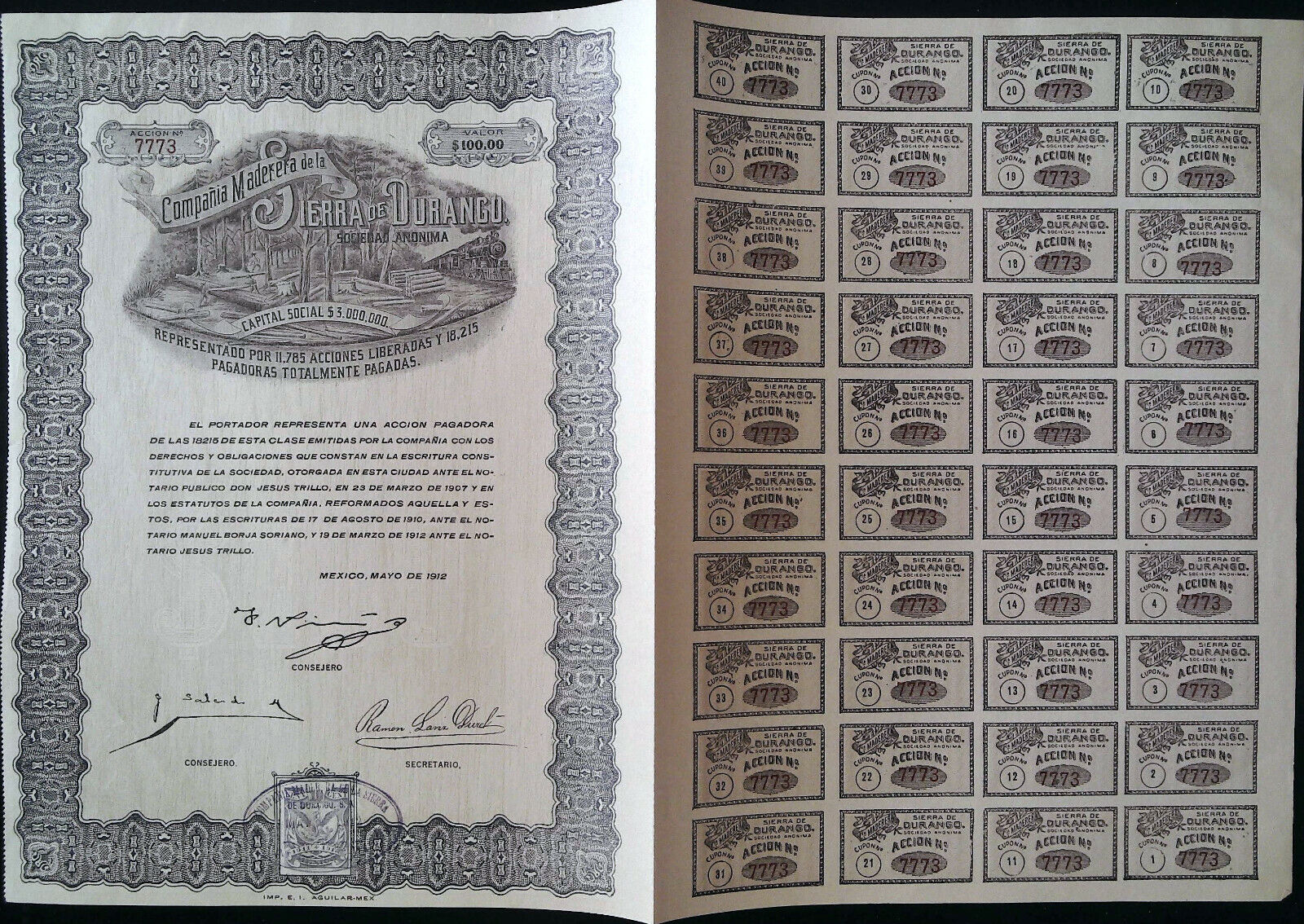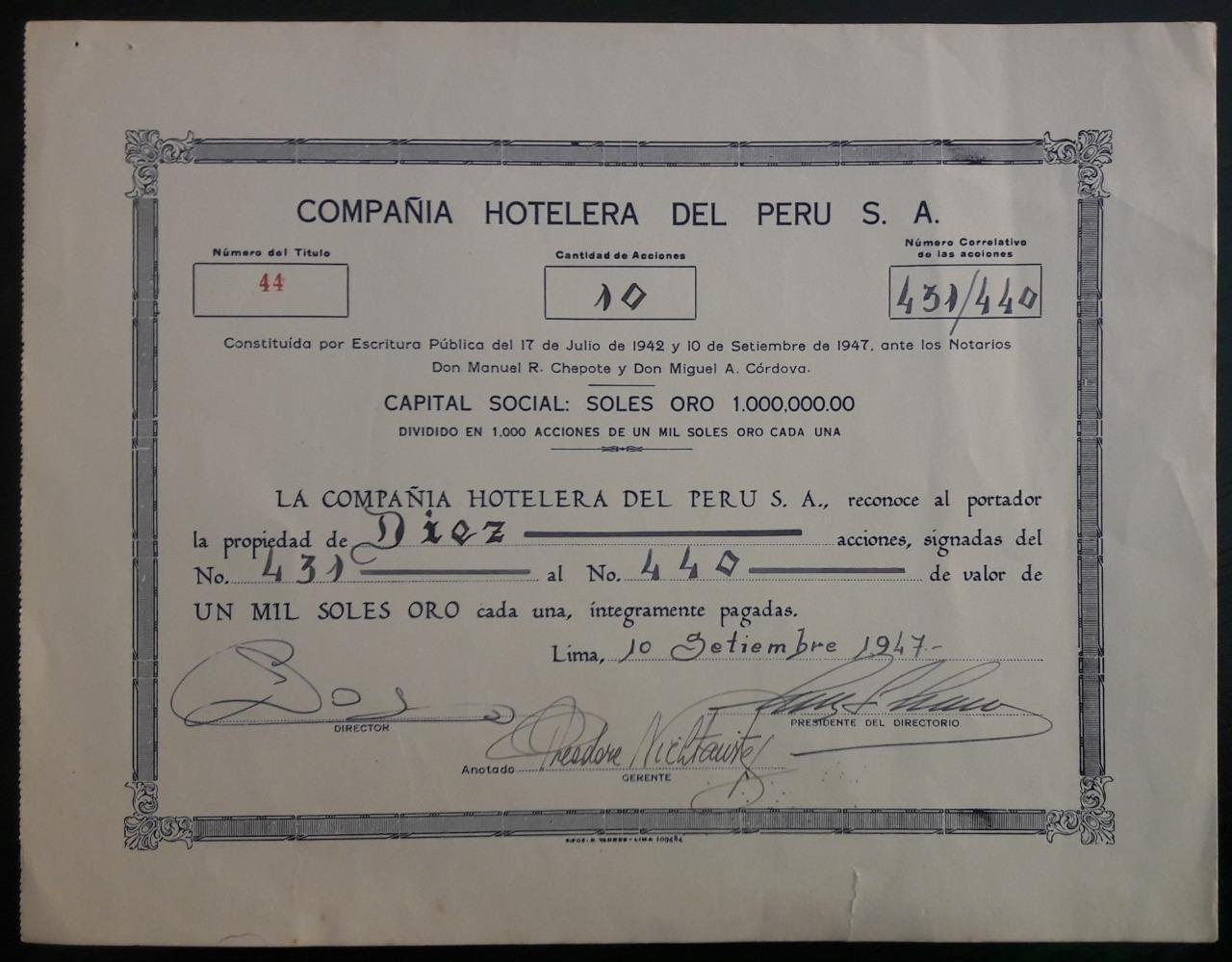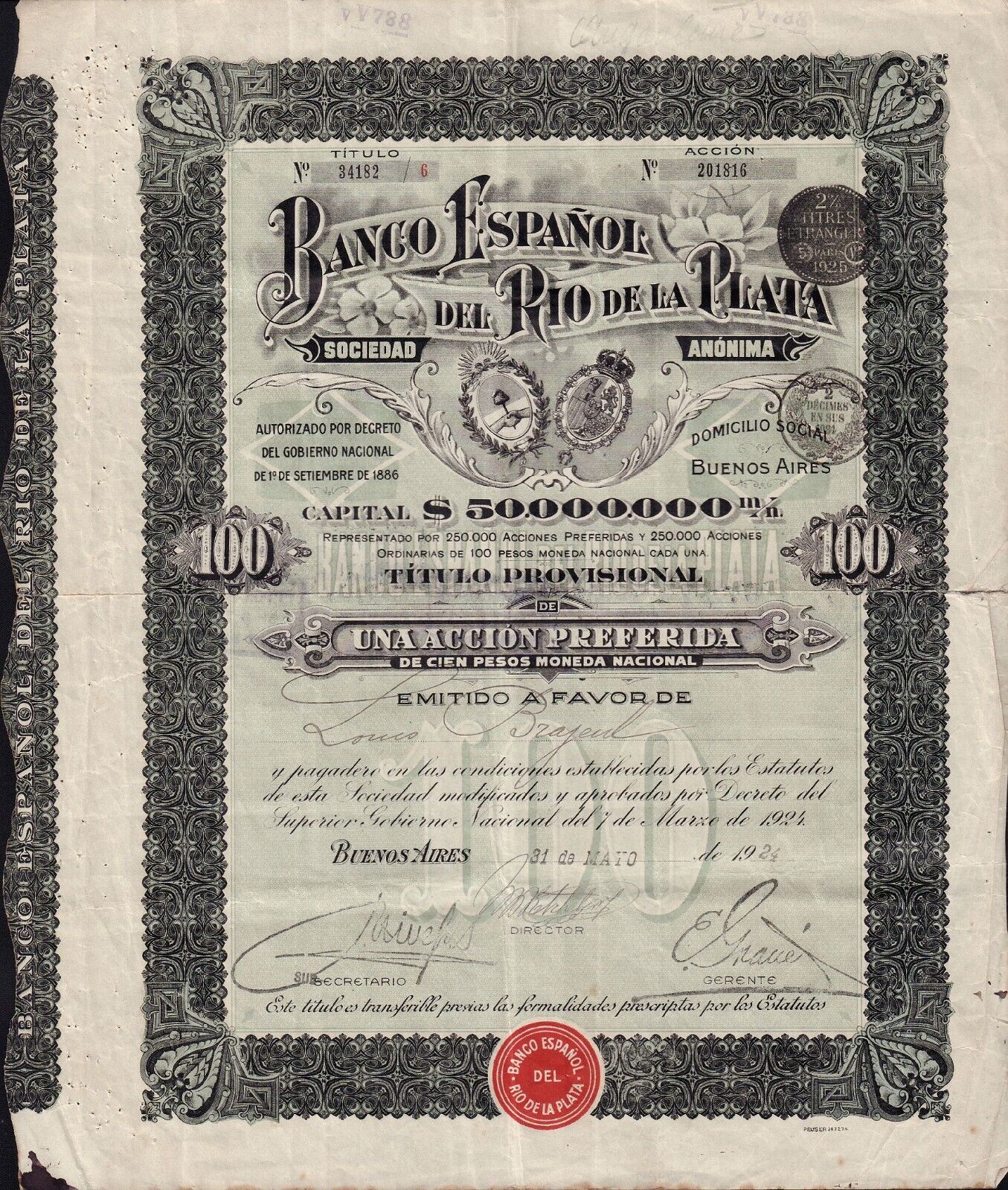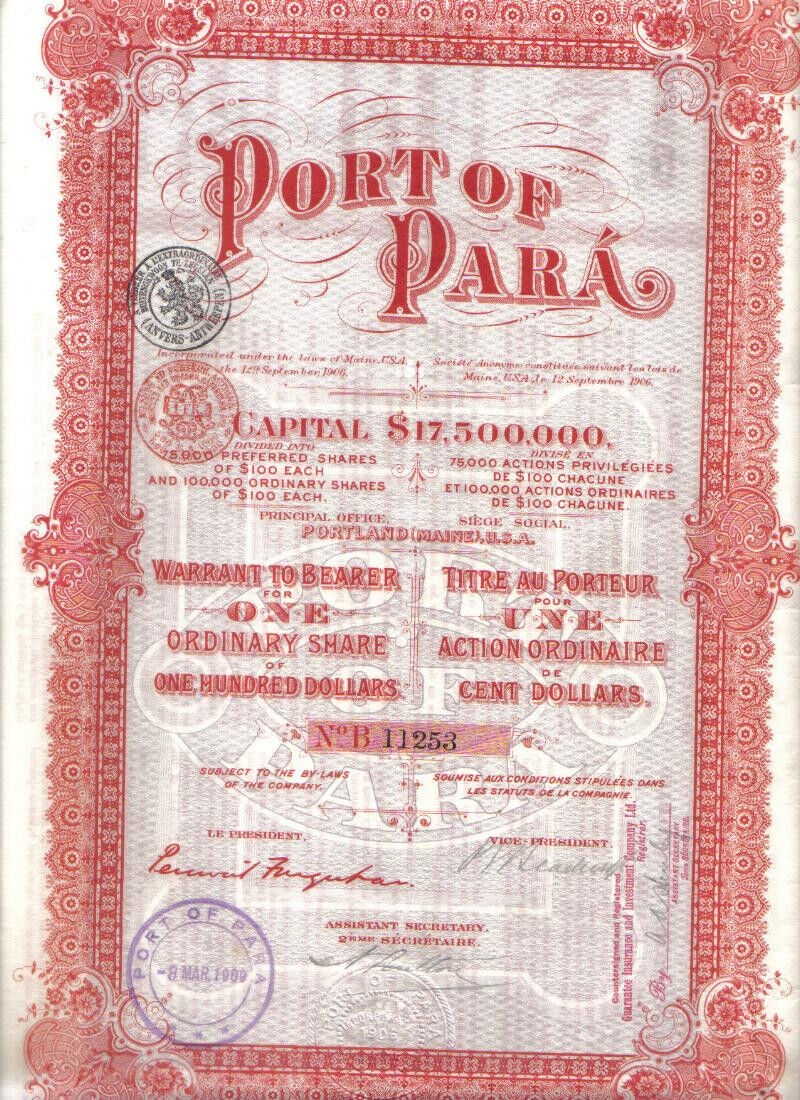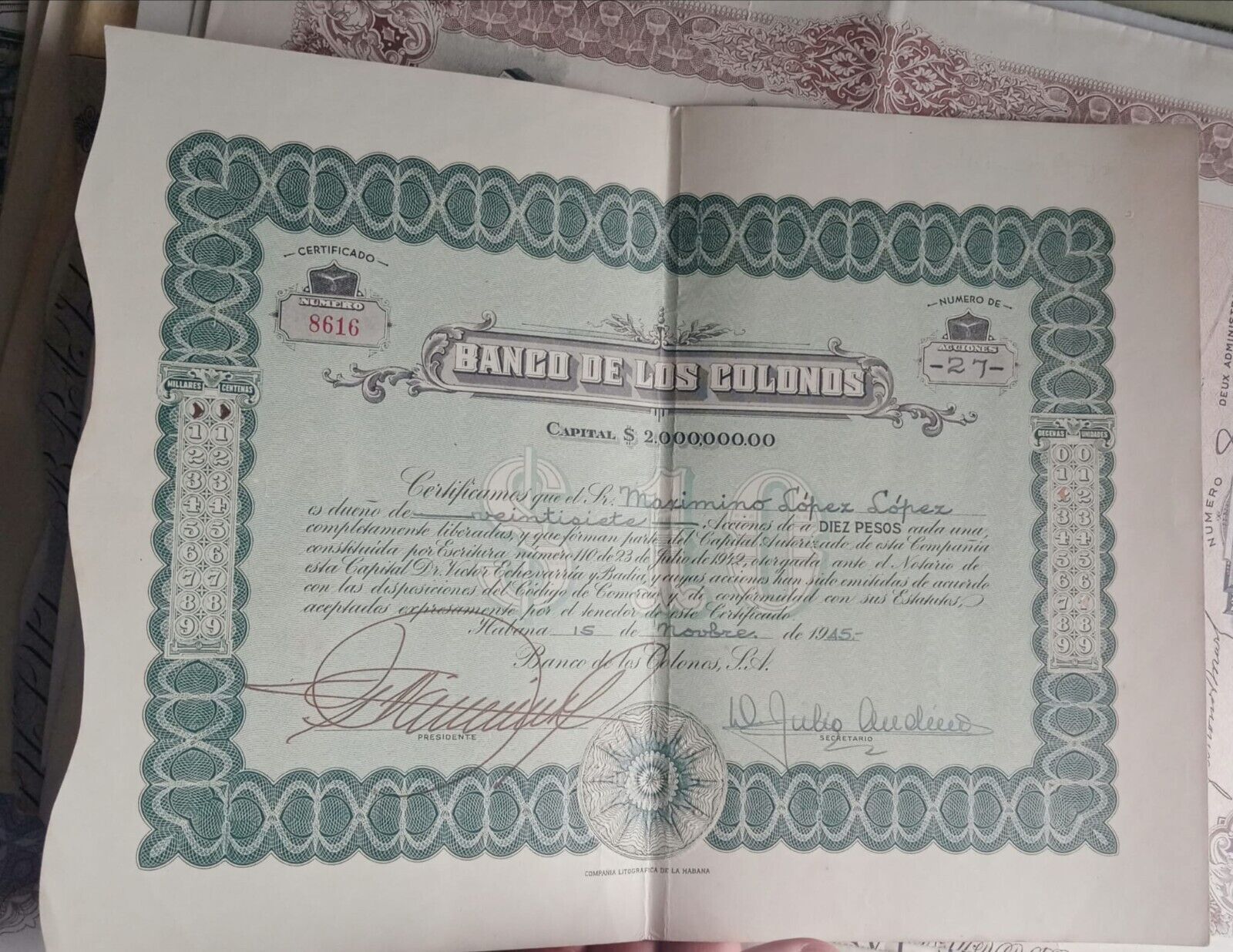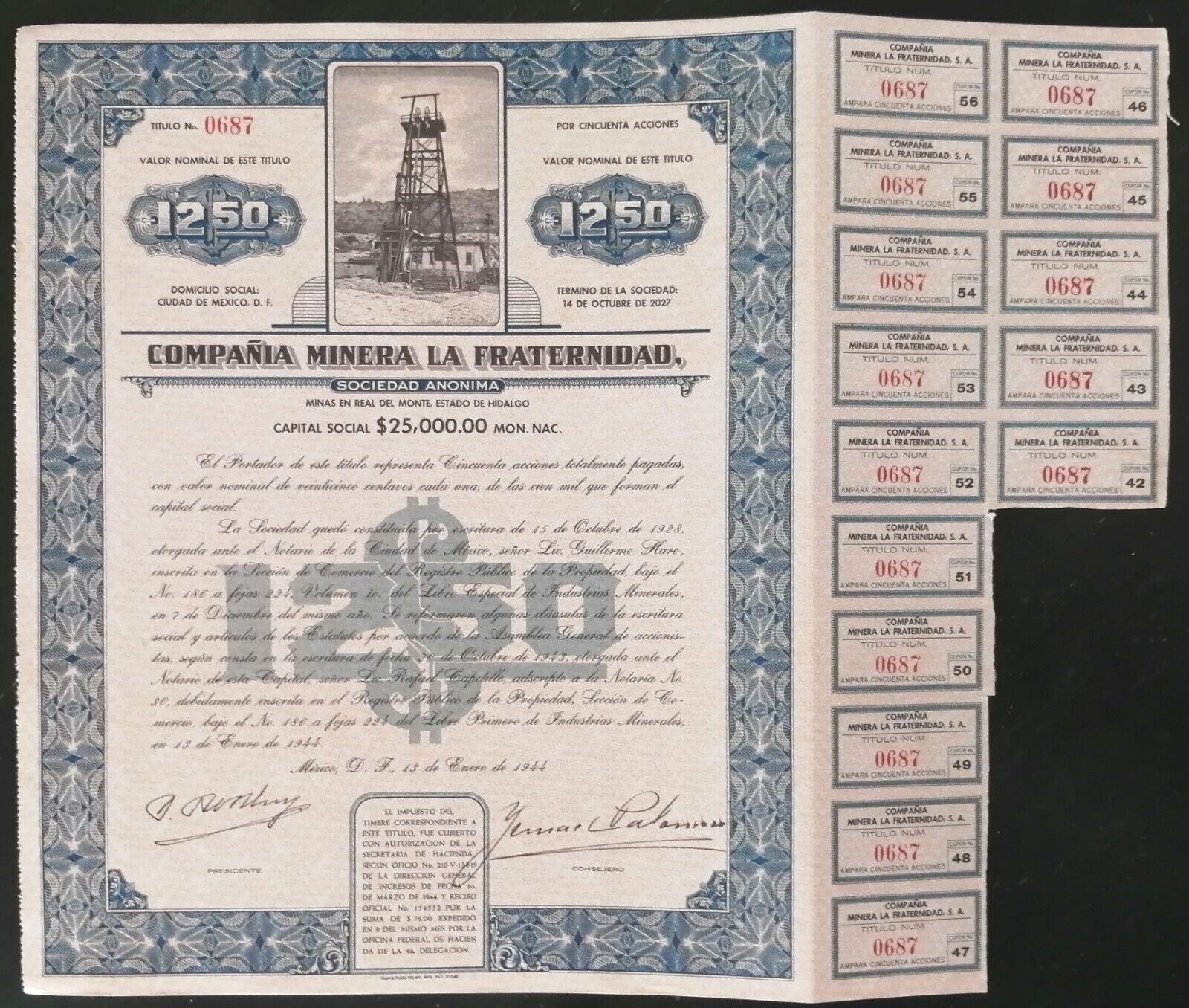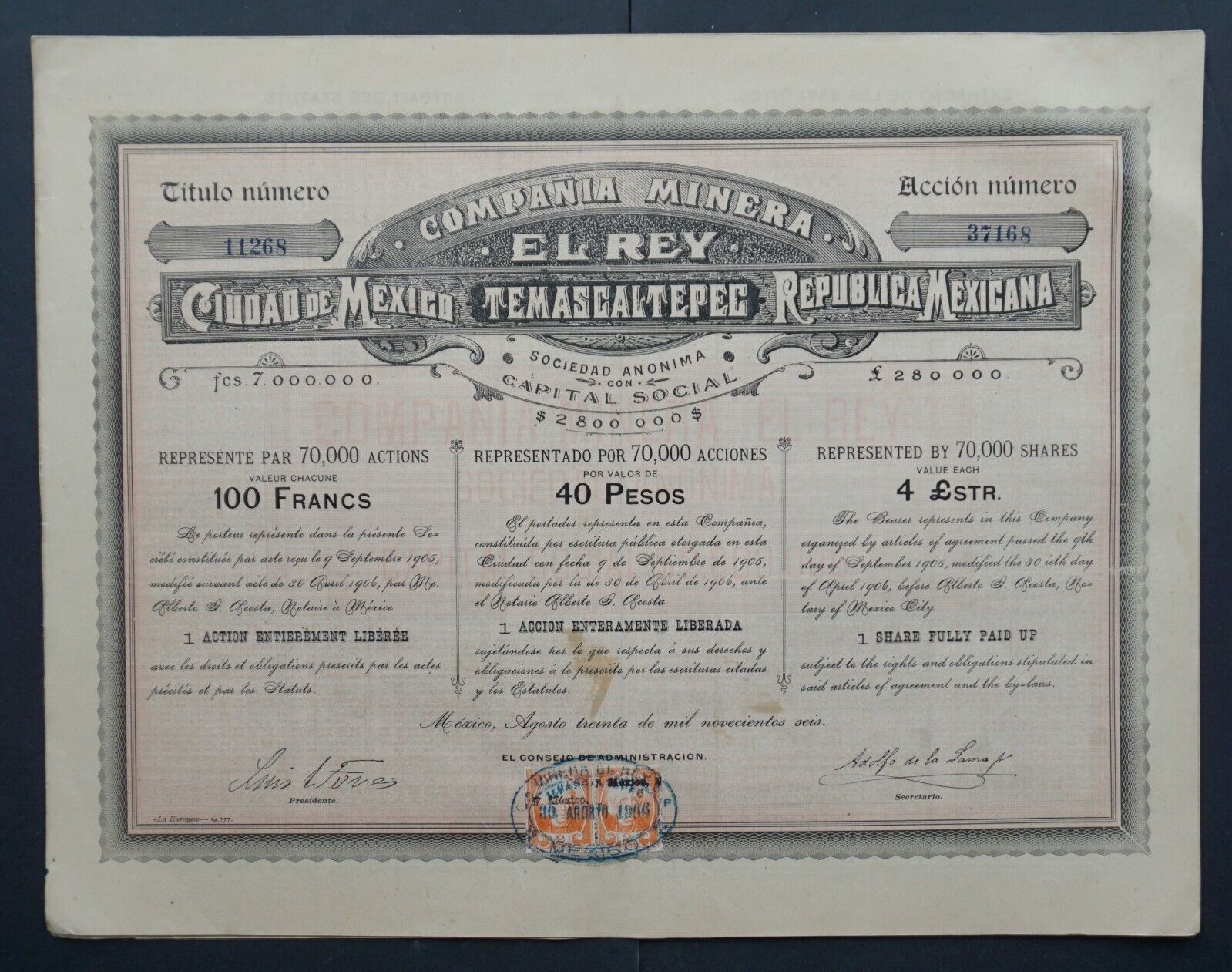-40%
Brandt Laboratorios share certificate 1956 Argentina
$ 4.22
- Description
- Size Guide
Description
One certificate of "Brandt Laboratorios S.A." for 20 shares of 100 pesos each (one single certificate). Buenos Aires 1956 . Condition (opinion): Fine (F) Uncancelled.Printer: Boldt Impresores.Watermark paper.Director´s Mr Brandt hand signature at lower left.Contais Coupons nr 15 to Nr 32.See below related information from the web in Spanish and English (translated online).The picture is for reference only.
In 1954
its officers
drove
a production schedule
and processing
soy
lecithins and other
baby food
products and by
1956
created
the subsidiary
"
Agrosoja
SRL
"(online translated) see below for more information.
---------------------------------------------------------------------------
Postage, including packing material, handling fees : Europe: USD 6.40 / USA $ 7.30. Rest of the World: USD 8.10
FREE of postage for any other items.
Only one shipping charge per shipment (the highest one) no matter how many items you buy (combined shipping).
-----------------------------------------------------------------------------
Guaranteed genuine -
One
month
return
policy
(retail sales) .
Returns accepted with no questions.
Customers are invited to combine purchases to save postage.
Full refund policy ,including shipping cost,guaranteed in case of lost or theft after the completion of the complaint with Spanish Correos for the registered letters (purchases above $ 60.00).
As we have (or could have) more than one identical item ,the serial number may differ from those shown in the picture which is for reference only.
For purchases above .00 we send the orders registered with tracking number without extra charge, for purchases below .00 we ship as regular letters at the buyer's risk.
For purchases below $ 60,00 who want to register your letter with tracking number, please add an extra for : Europe .50 , U.S. .50 ,Rest of the word .30 .Please request or wait for our invoice before paying.
For some destinations and purchases below .00 customers may be requested for this extra shipping payment in order to register the shipment with tracking number.
We reserve the right to cancel transactions that require the sending of unregistered letters (without tracking number) to some destinations, when this extra payment has been requested.
If for any reason, your item did not arrive yet, or you are not 100% satisfied with the item you have received, please do not hesitate to contact , I will do all it takes to provide the best service.
Banknote Grading
UNC
AU
EF
VF
F
VG
G
Fair
Poor
Uncirculated
About Uncirculated
Extremely Fine
Very Fine
Fine
Very Good
Good
Fair
Poor
Edges
no counting marks
light counting folds OR...
light counting folds
corners are not fully rounded
much handling on edges
rounded edges
Folds
no folds
...OR one light fold through center
max. three light folds or one strong crease
several horizontal and vertical folds
many folds and creases
Paper
color
paper is clean with bright colors
paper may have minimal dirt or some color smudging, but still crisp
paper is not excessively dirty, but may have some softness
paper may be dirty, discolored or stained
very dirty, discolored and with some writing
very dirty, discolorated, with writing and some obscured portions
very dirty, discolored, with writing and obscured portions
Tears
no tears
no tears into the border
minor tears in the border, but out of design
tears into the design
Holes
no holes
no center hole, but staple hole usual
center hole and staple hole
Integrity
no pieces missing
no large pieces missing
piece missing
piece missing or tape holding pieces together
-------------------------
El denominado “cuarto emprendimiento” co-menzó también por iniciativa de la actividad privada, a mediados de la década del ´50, cuando el Dr. Solá del Instituto Nacional de Nutrición, preocupado por la desnutrición proteica de la mayoría de los jóvenes provenientes del interior del país, que realizaban el servicio militar obligatorio, se pone en contacto con el empresario Osvaldo A. Dighero, titular de
Brandt Laboratorios S.A.
Esta empresa se dedicaba a elaborar productos farmacéuticos, siendo representantes de Pfizer en Argentina. Para ese entonces el Sr. Dighero, considerado el ideólogo de este nuevo emprendimiento, estaba interesado en desarrollar el cultivo de la soja para obtener lecitina como emulsionante de los medicamentos que su empresa fabricaba y/o comercializaba (Agrasar, 1992).
Brandt Laboratorios
se propuso enton-ces introducir el cultivo de soja en el país a fin de aprovechar sus productos industriales y químicos. Por lo pronto comenzó dándole una base científica al nuevo proyecto, confiando su realización a ingenieros agrónomos. Convocó para ese propósito, al Ing. Ramón J. E. Agrasar (Fig. 2), posgraduado en los Estados Unidos de América (Master in Engineering, Texas A.I.M., 1954), quien viajó a ese país a contactarse con las universidades y funcionarios del USDA para realizar un estudio completo del comportamiento de las variedades de soja que más se cultivaban, así como su posible adaptación a nuestro medio (Martínez, 1957; Casas, 2000, Reca, 2006).En 1955
Brandt Laboratorios S.A
., en sociedad con los Ings. Agrasar y Ruzo, funda la filial Agrosoja SRL, con el objetivo de introducir al país el cultivo de soja, que hasta ese momento era desconocido por los agricul-tores y la mayoría de los profesionales. El liderazgo del proyecto le fue confiado al Ing. Agrasar (Martínez, 1957; Giorda, 1997; Reca, 2006), quien ocupó la gerencia técnica de la empresa hasta fines de la década del ´50
----------------
The so-called "fourth venture" also began on the initiative of private activity, in the mid-50s, when Dr. Solá of the National Institute of Nutrition, concerned about the protein malnutrition of most young people from the interior of the country, who were performing compulsory military service, gets in touch with businessman Osvaldo A. Dighero, owner of
Brandt Laboratorios S.A
. This company was dedicated to the manufacture of pharmaceutical products, being representatives of Pfizer in Argentina. By then Mr. Dighero, considered the ideologue of this new venture, was interested in developing the cultivation of soybeans to obtain lecithin as an emulsifier of the drugs that his company manufactured and / or marketed (Agrasar, 1992).
Brandt Laboratorios
then proposed to introduce the soybean cultivation in the country in order to take advantage of its industrial and chemical products. For now he began by giving a scientific basis to the new project, entrusting its realization to agronomic engineers. He summoned for that purpose, Ing. Ramón JE Agrasar (Fig. 2), a postgraduate in the United States of America (Master in Engineering, Texas AIM, 1954), who traveled to that country to contact universities and USDA officials to conduct a comprehensive study of the behavior of soybean varieties that were most cultivated, as well as their possible adaptation to our environment (Martínez, 1957; Casas, 2000, Reca, 2006). In 1955
Brandt Laboratorios SA
, in partnership with Ings. Agrasar and Ruzo, founded the subsidiary Agrosoja SRL, with the aim of introducing to the country the cultivation of soybeans, which until then was unknown to farmers and most professionals. The leadership of the project was entrusted to Ing. Agrasar (Martínez, 1957; Giorda, 1997; Reca, 2006), who held the technical management of the company until the end of the 1950s
--------------------------------
De acuerdo con las investigaciones realizadas por la Dra. Laura Giorda
(1997), el último y efectivo intento de implantar el cultivo de soja en Argentina
se “inició en 1956, cuando la empresa privada
Brandt Laboratorios SA
fundó
una filial llamada Agrosoja SRL y, simultáneamente, realizó un convenio de
investigación agrícola con el organismo oficial específico, la Dirección General de Investigaciones Agrícolas (dependiente del Ministerio de Agricultura de
la Nación), organismo precursor del INTA, dirigido por el Ing. Agr. U. García.
Este convenio fue el primero suscripto en el país que asoció el esfuerzo privado y oficial para emprender un plan de investigación agrícola destinado a una
especie todavía no cultivada en la Argentina”. Ya creado el INTA, este programa nacional de investigación estuvo coordinado por el Ing. Agr. Raúl Martínez
(EEA Pergamino) e Ing. Agr. H Pacagnini (EEA Roque Sáenz Peña).
-------------------------------------------------
According to the research carried out by Dr. Laura Giorda
(1997), the last and effective attempt to implement soybean cultivation in Argentina
began “in 1956, when the private company
Brandt Laboratorios SA
founded
a subsidiary called Agrosoja SRL and, simultaneously, entered into an agreement for
agricultural research with the specific official body, the General Directorate of Agricultural Research (dependent on the Ministry of Agriculture of
la Nación), the precursor body of INTA, directed by Ing. Agr. U. Garcia.
This agreement was the first signed in the country that associated the private and official effort to undertake an agricultural research plan aimed at a
species not yet cultivated in Argentina ”. Once INTA was created, this national research program was coordinated by Ing. Agr. Raul Martinez
(EEA Pergamino) and Ing. Agr. H Pacagnini (EEA Roque Sáenz Peña).
-------------
INITIAL
INTEREST (translated online/orientative only)
The possibilities
of producing
cheap food
made
of Dr.
Sola
(
Institute
National Nutrition
)
a fervent
interest in promoting
its cultivation
.
So
he contacted the
Mr.
Osvaldo
Dighero
,
Brandt
driver
Laboratories
,
makers of
products
pharmacists,
representatives of
Pfizer
and
terramicinas
, who was
interested in
the
problem.
Dr.
Sola
was concerned that
despite
the statistics of
our consumption
of meat,
had
protein malnutrition
among the
boys who came
to military service
, especially
from Northwest
, North and
South.
On the other hand
Dighero
was keen
on
Drug
lecithin
as an emulsifier
,
was also a
"boom"
in the United States
.
I was
then
called by
Dighero
-
Sola
to analyze the possibilities
of the crop
in
Argentina
permanence
especially
my
recent
U.S.
.
Thus was founded
Agrosoja
.
without
Dighero
support
and resources
Laboratories
Brandt
offered us
little
11 /
Reproduced from the
newspaper Clarín
Rural
diciembre/1992
19
.
-------------------------------------------------------------------------------------
and
according to
research conducted
by Dr.
Laura
Giordano
(
1997
), the last
and effective
attempt to introduce
the cultivation of
soybeans in
Argentina
they
"
began in
1956, when
private enterprise
founded
Brandt
Laboratories
SA
a subsidiary called
Agrosoja
SRL
and simultaneously
made an
agreement
agricultural research
with
specific
government agency
,
the Directorate
Gene
-
ral
Agricultural Research
(under the Ministry
of Agriculture
the Nation)
,
the forerunner
of the
INTA
, led by
Eng.
U.
Garcia.
This agreement
was first
signed in
the
country
associated
private
effort
official
do
and
undertake
agricultural research
plan
aimed
at
species
still
cultivated
in
Argentina
"
.
I
created
the
INTA
,
this program
national research
ma
was coordinated by
the Eng
.
Raul Martinez
(EEA
Parchment
)
and
Eng.
H
Pacagnini
(EEA
Roque
Sáenz
Peña
)
.
According to
the literature review
and technicians
interviewed
in 1964
,
as
part of the
national program,
implemented a
trial network
soy
which
was part of
the
EEA
INTA
Paraná
, in this
context
was made
,
first
trial
of this crop in
the province
of Entre
Rios.
the
themselves were
articulated
to
the emerging
work of
Mr. Marcelo
Fagioli
and
Carlos
Senigagliesi
of the
EEA INTA
Parchment
,
and
Marcos
Juarez
,
and
in relation to
the Department of
Industrial
Crops
Agronomy
University of
Buenos
Aires
,
at that time under
the ownership of
Mr.
Pascale
.
In the
EEA
Paraná
were in charge
of
Agr.
Jorge
Erejo
-
Movich
and Hector
Jimenez.
----------------------------------------------------------------------------------
En 1954 sus directivos impulsaban un programa de producción de soja y elaboración de alimentos infantiles lecitinas y demás productos y subproductos del grano.hacia 1956 crean la filial "Agrosoja SRL"


